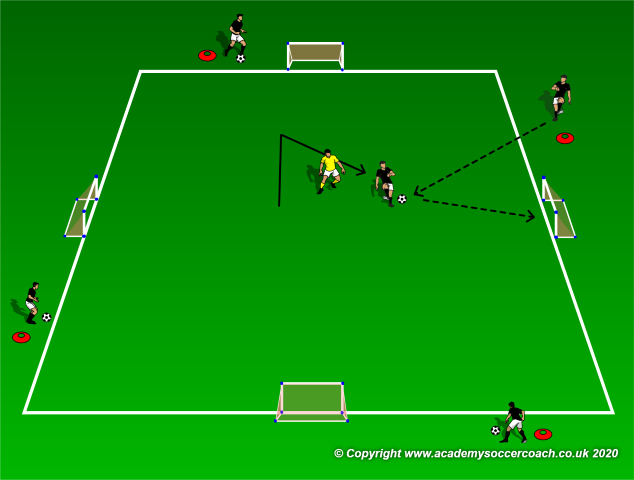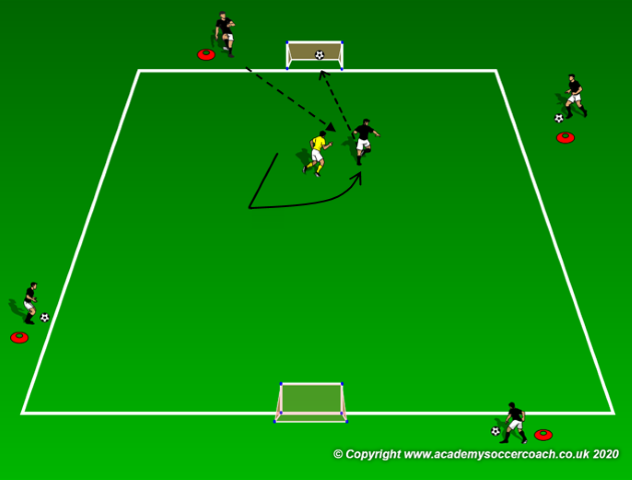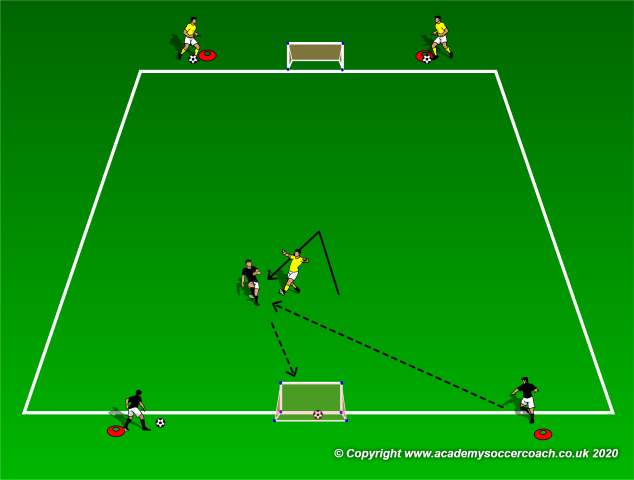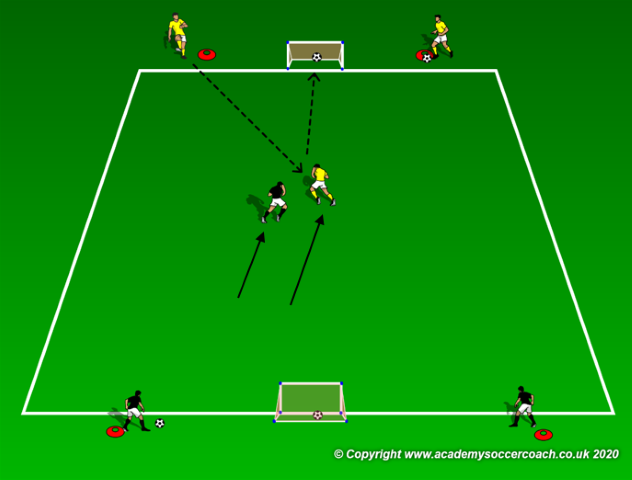- You are here:
- Home »
- Training With a Ball »
- Lose Your Marker to Score Conditioning Game
Lose Your Marker to Score Conditioning Game
By Philip Cauchi
Theme: Rapidity.
Development of the soccer domains:
Technical: Receive and control the ball while moving at speed. Finish with accuracy.
Tactical: Getting unmarked to receive the ball.
Mental: Quick thinking under opposition pressure of what moves to perform to lose the defender.
Physical: Perform rapid movements while maintaining the body in a state of equilibrium.
Organisation: An area measuring 12 yards by 12 yards. Outside players called feeders are positioned as shown in the first diagram.
Training load:
Sets: 2.
Repetitions: 4-6.
Duration each repetition: 6 to 8 seconds.
Recovery between repetitions: 60 to 80 seconds (work to rest ratio of 1:10).
Recovery between sets: 3 minutes (light technical activity may be performed during this period thus accelerating the recovery process).
N.B. This practice is beneficial both for attackers who need to create space and for the defenders who must track and mark tightly the attacker close to the goal.
Periodization: The exercise should be carried out immediately after the warm-up when the players are fresh and two days prior to a match (MD-2).
Targeted energy system: Anaerobic alactic (produce energy rapidly with minimal lactic acid build-up).

The attacker inside the marked area aims to lose the defender to receive the ball from any of the feeders positioned outside the area. The attacker can move to receive the ball from another feeder after finishing the first action. However, this must be performed within 8 seconds.

Progression 1 – The attacker can score in only two goals which are positioned opposite each other. This makes it more challenging for the attacker to get unmarked and score.

Progression 2 – Each player inside the area has two feeders on the same goal line. After the attacker concludes his action he must defend. Therefore, roles are changed immediately.

Transition occurs as now the defender becomes the attacker and immediately moves to receive a ball and score in the opposite mini goal.
By Philip Cauchi
